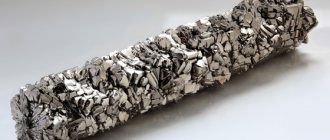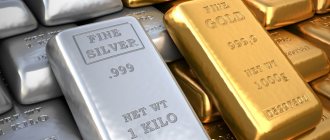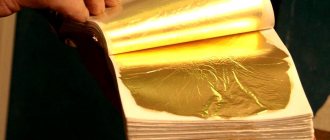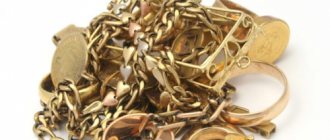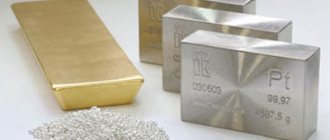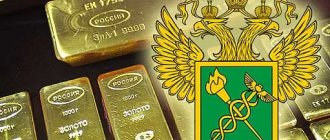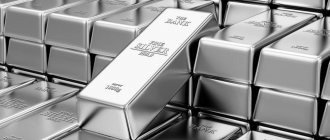Of all the precious metals, gold and silver have long served as excellent means of currency, as world currencies have been pegged to bimetallic standards for several centuries. The US currency's link to silver remained until the 1960s, while the US dollar's link to gold was ended in 1971 when President Nixon ended the dollar's fixed-rate convertibility into gold. This depegging of the gold price is often referred to as the “initial public offering of gold,” which democratized the precious metal as an asset and paved the way for its strategic investment role in the modern portfolio to help navigate changing business cycles.
From Currency to Asset Class: Understanding the Two Price Drivers of Precious Metals
Gold and silver have taken different paths since their humble beginnings as currencies, but both are now attractive to global investors as a potential store of value and source of portfolio diversification. However, there are some significant differences in terms of the unique role each asset can play in a portfolio in terms of price, performance, volatility and risk management.
As with most real assets, the price movements of both assets are determined by their unique sources of supply and demand. Today, silver remains a widely used precious metal, and its price is largely determined by industrial demand and mining. Over time, the demand for silver tends to rise and fall linearly with overall economic growth, largely due to its varied industrial uses.
In contrast, gold has a more diverse set of demand drivers, ranging from industrial and technological uses to a mature global jewelry market. Apart from its use among investors, gold also serves as a reserve asset for central banks around the world. This diversity in demand, both cyclical and countercyclical, has helped maintain gold's low correlation with traditional stocks, bonds and some real assets at various stages of the full economic cycle.
In fact, gold's unique demand dynamics make it suitable for managing a range of systemic risks and market challenges during various business cycles. In 2021, many noted its various benefits of gold as global investors flocked to gold for its safety and high liquidity, leading to a shift in demand. Rising investment in gold helped offset pandemic-related declines in jewelry demand and central bank purchases.
In terms of supply dynamics, gold's higher scarcity relative to silver is reflected in the historical price differential between the two precious metals. But looking at the difference shows how the unique characteristics of gold supply and demand have led to lower overall price volatility over time and across different business cycles. As shown in the first graph, in terms of tons, the annual supply of silver is about seven times the supply of gold. However, based on market values, the annual supply of silver is a small fraction of the supply of gold, which could result in reduced liquidity and higher volatility in the global silver market (see chart below).
Rare accessories
Have you asked yourself the question why branded accessories are more expensive than no-name jewelry, even if they do not differ in appearance and quality? Or why does jewelry of the same size, from the same metal and with the same stones cost more from a custom jeweler than from a factory?
In the first case, the cost of the decoration includes the company’s costs for developing the brand or promoting the next model range. In the second case, the cost of the jeweler’s work divided by the consignment of goods. This does not mean that the design of the product for the factory is “invented” by the worst jeweler. A large batch, as it were, “shares” the cost of hiring him for each product. This does not happen with small batches or unique jewelry. Accordingly, your uniqueness in silver will often cost more than the “factory approach” in gold.
What is softer, gold or silver? Gold is called a more ductile metal, but high-grade silver also allows for the creation of jewelry with fine details. In addition, the silver is blackened, giving the relief an expressive hue.
Returns on gold and silver
The gold to silver ratio is a technical pricing indicator that can be used to assess the relative value of each precious metal. As you can see in the chart below, a lower number reflects that gold is undervalued, while a higher number implies that silver is relatively more attractive. While the ratio often shows which precious metal may be overvalued currently, it also demonstrates the fact that silver's reliance on industrial applications to support demand makes it more vulnerable to declining real yields during certain business cycles, which in turn helps gold maintain high real returns over time.
What is heavier with the same volume - gold or silver?
Let's try to figure out this simple question. To answer this, we first need to remember what we were taught at school in physics and chemistry lessons. So, in order to find out the mass, you need to multiply the density by the volume. Accordingly, with equal volume we look at the density. Now we take specific values for each of the precious metals. In particular, density:
• silver – 10,500 kilograms per cubic meter; • gold – 19320.
That's all - the answer to the question has been found. Since the density of gold is higher, this precious metal is heavier. It is clear that we are talking about the same volumes of precious metals. Without this clarification, the comparison will simply be incorrect. It turns out that a ton of gold will take up approximately 2 times less space than a silver bar with the same weight. If you take two pieces of precious metal that are identical in size, then the gold one will be heavier. Let's give a simple example with specific numbers.
A ball with a diameter of 46.23 millimeters, made of gold, will weigh 1 kilogram. Therefore, even relatively light jewelry made from this precious metal looks impressive.
Analysis of the effectiveness of diversification of each asset
Understanding the diversification properties of each precious metal—or the strength and direction of the linear relationship between them—is another tool investors use to achieve an improved risk/return profile. Adding assets that have a low correlation to each other can also provide diversification, which helps investors seeking to optimize portfolio performance through cyclical and countercyclical market movements.
The table to the right shows that gold's lower correlation over the past year with both global equities and commodities overall highlights its potential to provide superior diversification performance on a relative basis relative to the broad movements of these asset classes.
Effective portfolio diversification can be measured by its risk-adjusted returns over time. The chart to the right shows that gold has historically delivered competitive returns and has outperformed silver on average over a number of past black swan events. Gold's ability to hedge significant equity declines, thereby reducing portfolio drawdowns, is a key example of one of the potential benefits of diversification.
Uses of gold
The demand for the yellow metal determines not only its use in the production of jewelry and the increase in the state’s gold and foreign exchange reserves. It is also very widely used in many other areas.
In industry, gold began to be actively used due to its chemical properties. It covers mirrors operating in the far infrared range. This is especially useful when conducting all kinds of nuclear research. Gold is also very often used for soldering components made of various materials.
Another area of application is dentistry. This is due not only to the impossibility of the yellow metal entering into a chemical bond with the human body, but also to its incredible corrosion resistance.
Pharmacology also cannot do without the use of this amazing yellow metal. Gold compounds are now actively used in various medical preparations that save from a wide variety of diseases.
These are not the only uses for gold. Due to rapid progress, there is an increasing need to use gold content in technological innovations. From this we can conclude that yellow metal is not only an attribute of luxury, but also a useful technical tool, the importance of which is increasing every year.
Understanding Value at Risk
Volatility is another metric that investors use to understand the level of risk associated with an investment. In general, more volatile assets are considered riskier, providing greater variability in returns and less certainty about expected results. Silver has historically been more volatile due to its relatively small market size and demand, which is dependent on manufacturing and production. The one-year average annual standard deviation of weekly returns for gold and silver highlights silver's higher volatility relative to gold.
High sterling silver
Why is gold more expensive than silver? It is more difficult to mine and process gold than silver, since this metal is less common in nature. But like silver, 100% gold is not used to make jewelry. For this, jewelers need alloys. To improve the properties of metals—for example, to make them stronger or more ductile—impurities are used. As a rule, these include copper, zinc, titanium. High-grade silver is more expensive than low-grade gold.
Among the samples traditional for jewelers are silver samples: 750, 800, 875, 916, 925 and 960. The 925 sample is called “sterling” , the alloy of which includes copper, from which cutlery, dishes, and vases are often made. Jewelry of this type has numerous subtle elements and details. This type of silver is incredibly malleable! Blackened silver is also valued , but due to the complexity of the manufacturing technology and the length of the process. Why silver is cheaper than gold is the wrong question. Find out below what other types of silver are expensive.
Getting the most out of your precious metal
As 2021 progresses, several factors could continue to drive gains for gold, silver and other commodities. In fact, diversifiers are likely to play an increasingly important role this year in helping investors navigate portfolios amid rising technical risks and changing business cycles. Understanding how each asset can potentially help optimize risk-based performance is vital. For investors who want to manage their portfolios effectively, gold can be an excellent, less volatile source of ongoing diversification.
Posted by Diego Andrade March 15, 2021 | Translation: Gold Reserve
Difference #2: Silver is more affordable
This seems obvious, but it is important because silver has many similarities to gold.
If you buy the silver itself, rather than ETFs, certificates, or futures contracts, which are paper investments, you can reap the same benefits as with gold. Benefits that virtually no other asset provides.
Like gold, silver is a heavy asset. Of all the investments you own, how many can you hold in your hands? In a world of paper income, digital trading and currency creation, physical silver is a tangible asset.
It's money, just like gold. They cannot be created out of thin air (and thus become worthless) like paper currency or digital records.
If you own silver, you have no risk of default. Compare this fact to other investments you make.
The advantage of silver over gold is that you can get all the benefits but at a much lower cost. Your financial insurance will become more affordable. This is why silver is called "the poor man's gold."
Note to Investors : Silver is much more affordable for the average investor.
There is another benefit to the lower price of silver: the ability to sell due to emerging needs.
There may be a time when you don't want to sell an entire ounce of gold to meet a small financial need. Use silver. If you wanted to buy a car or make another large purchase, you would use your gold reserves. But if you need some money, you can sell some of your silver to cover the cost of things you need without having to liquidate your gold.
We think every investor should own some silver for this very reason.
Lastly, silver's greater availability makes it ideal for gifts.
Thus, silver is ideal for investors with a small budget and also for meeting small financial needs that may arise in the future.
XAU/XAG Chart Analysis
A few important points that can be seen on the monthly gold/silver ratio chart:
- It is clear that the ratio tends to vary within a narrow range of 45-85 (highlighted on the graph). But as volatility and uncertainty increase, we see sharp movements that push the trade ratio further outside of its normal range. For example, during the Covid crisis, the gold/silver ratio peaked close to the 125-127 levels, well above its all-time high, normal range and psychological level of 100.
- The 35-40 range acts as a lower limit for the ratio. It is highlighted with a green rectangle on the graph.
- The statistical average calculated over the period (January 2000 to August 2021) is around 65 (approximate value). This means that the 65 level acted as a midpoint for several swings, which is also clearly visible on the chart.
Now that we have a basic understanding of what important levels are, let's move on to interpreting these levels and understanding what rising and falling ratios mean.
Properties and structure
There has long been a concept that a compound in which silver predominates (more than 70%) is it. The same was said about other components. Electrum occupied a middle position between these metals. Current realities show that it is possible to produce products that contain less than 35% gold. Depending on the content of components in the composition, the properties of elethrum also change:
- belongs to the class of native elements;
- increased resistance to oxidation;
- high melting point;
- density - 6.5 g/cm3;
- Mohs hardness - 3 points.
Difference #5: Silver Stocks Fall
Governments used to have large reserves of silver. Today, however, most of them no longer have reserves of this metal. In fact, the only countries that store silver are the US, India and Mexico.
The main reason governments don't hoard a lot of silver is because it is no longer used in coinage. But, as we indicated above, silver is now used in industry to a much greater extent. Therefore, if future industrial needs increase or the supply chain is disrupted, governments will be poorly supplied with this metal to support their needs.
If governments started buying silver for some reason, it would have a huge impact on market demand and the price of silver would skyrocket.
For more information, visit https://goldsilver.com/blog/gold-vs-silver-the-5-differences-that-matter-most-to-investors/
Varieties
The alloy of gold and silver is not the only one when it comes to jewelry. There are several compositions from which jewelry, coins, and bars are made:
- Low-grade compound - sample 375. A compound consisting of two components - gold, copper. The first metal contains no more than 37.5%. There are only 375 grams of noble material per kilogram of weight. Has a red tint.
- Compound 500 sample. Not used in jewelry due to low ductility and poor casting characteristics. Gold content is up to 50%. The rest of the volume is occupied by various impurities.
- Mixture of 585 samples. It is considered the most popular alloy among jewelry buyers. It contains no more than 58.5% noble material. The remaining 41.4% may be impurities. If it is silver with palladium, the result is a compound resembling platinum.
- Compound 750 standard. Contains 75% noble metal. The rest of the volume is occupied by impurities.
- Mixture 916 sample. Least popular alloy. Most often used by oriental jewelers.
- Material 999 standard. This is pure gold from which bank bullion is made. Pure silver is used for the same purposes.
Precious metal granules
Colors
The color of products made from an alloy of precious metals may vary significantly. The following types are distinguished:
- White - additional elements are silver, palladium, platinum. It has an increased strength index.
- Yellow - the yellow shade of jewelry is the most familiar to buyers. Additional metals are copper, silver.
- Red is a mixture that contains a large amount of copper. Most often there are the same number of components.
- Rose is another blend option that contains copper.
- Green is a rare mixture that has been known to jewelers since ancient times. Brittle alloy.
Recently a new compound called black has appeared. During the production of jewelry, its surface is processed using a laser. The composition is a noble material, cobalt, chromium.
Gold samples
On jewelry and products made from noble materials, a test is placed, which indicates the amount of pure material in the composition. Labeling is established according to government documents. Regarding the standards, the following gold samples can be distinguished: 375, 500, 583, 585, 750, 959, 999.
Effect of impurities
Additional materials contained in mixtures with noble metals change their characteristics and appearance. For example, a large amount of silver makes the product fragile. Copper changes color to fiery.
Characteristics of individual alloys
The density of a material is a physical property that is determined by the mass of a certain unit of volume. The measurement of the parameter is determined by the ratio of the mass and size of the body.
An alloy of gold with other metals is indicated by a breakdown, which is applied directly to the product.
Rare samples
The highest and rarest standard is 999. It cannot be found on jewelry. This means pure precious metal that is not used for production. The density of 999 gold is 19.3 grams per cubic centimeter.
Slightly more than 96% of pure gold is contained in products marked 958. However, they are extremely rare due to the fragility of the metal and the impossibility of polishing it. The density of this material is 18.3 g/cm3.
900 and 917 samples are rare in Russia. High-quality jewelry is made only to order. Previously, coins were minted from gold metal of the highest standard , which is why the samples are called coin samples. The composition of gold in them is 90%. The alloy contains silver and copper in prescribed proportions. Density indicators for such alloys vary from 17.3 to 17.9 grams per cubic centimeter.
75.5% of the precious metal is contained in products of 750 standard. Additionally, palladium, copper, platinum, silver, and nickel are introduced into the alloy. A fairly durable metal that can be processed, polished and has good strength characteristics. The density of 750 gold varies from 14.4 to 17.4 grams per cubic centimeter.
Determination of carat weight
British carats are a traditional value used to measure the purity of gold and its weight in a product. The smallest value is 8 carats (K). The specific gravity of 999 gold is 24 carats. If other elements are added to the alloy to change the characteristics of the metal, the carat value drops. The 18-karat precious metal contains 6 parts of impurities and 18 parts of pure gold.
For example, high-grade 917 gold has a mass of 22 carats. And such a popular 585 alloy is only 14 carats.
Source
